24 Beautiful Shade-Loving Evergreen Trees for Your Garden Oasis
Shade-tolerant evergreen trees stand as silent guardians of tranquil landscapes, transforming dimly lit garden spaces into verdant sanctuaries of perpetual greenery.
These remarkable botanical sentinels possess remarkable adaptations that enable them to thrive in low-light environments, creating lush and resilient natural backdrops throughout changing seasons.
Garden enthusiasts and landscape designers appreciate these versatile plants for their ability to maintain vibrant foliage and structural integrity even in challenging light conditions.
Their dense canopies and robust root systems contribute to the aesthetic and ecological balance of outdoor spaces, providing continuous visual interest and environmental benefits.
Mature specimens can serve multiple purposes, from creating privacy screens to establishing elegant architectural elements within residential and commercial landscapes.
Gardeners seeking reliable and attractive botanical solutions will find solace in these remarkable green companions that promise consistent beauty and minimal maintenance requirements.
The comprehensive collection encompasses an impressive range of twenty-four distinctive shade-loving evergreen trees, offering diverse options for different landscape designs and environmental conditions.
Anise Tree (Illicium parviflorum)
Anise trees stand out with their distinctive oval leaves that command immediate attention, releasing a powerful fragrance when gently brushed.
Elegant evergreen foliage provides year-round visual interest across different landscapes.
Shade-loving plants like these offer incredible versatility for garden design.
Round yellow blossoms emerge subtly beneath the lush green canopy, adding delicate charm to the tree's overall appearance.
Fresh leaves feel smooth and emit an enticing aroma when touched, creating a sensory experience for anyone nearby.
Native to specific regions, these remarkable trees adapt seamlessly to multiple growing conditions.
Botanical enthusiasts treasure anise trees for their unique structural beauty and sensory qualities.
Canadian Hemlock (Tsuga canadensis)
Canadian hemlock trees dominate eastern forest landscapes with their distinctive pyramidal silhouettes and short evergreen needles.
Wildlife depends on these resilient trees for essential food and habitat protection in shadowy woodland environments.
Delicate tiny cones dangle gracefully from sturdy branches, creating natural visual interest across dense forest floors.
Native to regions throughout United States and Canada, these remarkable plants thrive in low-light conditions where other species struggle.
Ecological experts appreciate hemlock trees for their critical role in forest ecosystems and biodiversity preservation.
Dense branch structures provide critical shelter for small animals and insects seeking protection from harsh weather conditions.
Dark green needles contribute to the tree's elegant appearance, making it a standout feature in woodland settings.
Nature lovers recognize hemlocks as silent guardians of complex forest landscapes, supporting intricate environmental networks.
American Holly (Ilex opaca)
Holly stands as a magnificent landscaping star, gracing yards with year-round beauty through its remarkable adaptability.
Tree-like formations can soar beyond 40 feet when allowed natural growth, creating dramatic garden statements.
Deep green glossy leaves provide constant visual appeal across changing seasons.
Red berries punctuate winter landscapes with bursts of vibrant color, attracting local wildlife and adding visual drama.
Careful pruning lets you shape this plant into shrub or tree configurations matching your design preferences.
Native to North America, holly brings distinctive character to outdoor spaces with minimal maintenance requirements.
Its resilient nature ensures a stunning botanical companion that enhances landscape aesthetics throughout the year.
Lawson Cypress (Chamaecyparis lawsoniana)
Lawson cypress stands out as a garden superstar with its elegant spire-like shape and lush foliage that demands attention.
Whether you plant a single specimen or create a dramatic hedge, this evergreen delivers maximum visual impact.
Its dense branches provide natural privacy and structure to outdoor spaces.
Landscape architects appreciate how easily the Lawson cypress adapts to different garden styles and settings.
Compact and attractive, these trees work beautifully in small yards or expansive landscapes.
Their year-round green color ensures your garden looks polished and intentional throughout the seasons.
Nature lovers will adore how this tree adds depth, texture, and sophistication to any green space.
Chinese Fringe Flower (Loropetalum chinense)
Chinese fringe flowers shine as remarkable shade-loving plants with their dramatic magenta blossoms.
Delicate spindly petals burst from lush canopies, creating visual drama in darker garden corners.
Unique purple-tinged leaves provide extra visual interest throughout seasons.
Landscape designers appreciate how these trees effortlessly transform shadowy zones into eye-catching botanical displays.
Such plants demonstrate nature's incredible adaptability in challenging garden environments.
Unexpected color and texture emerge where most expect monotony.
Shade-dwelling trees like the Chinese fringe flower challenge traditional gardening assumptions with their vibrant, resilient character.
Japanese Holly (Ilex crenata)
Japanese holly captivates gardeners with its distinctive charm, featuring rounder and lighter green leaves that set it apart from its American cousin.
Belonging to the same holly genus, this plant offers a unique botanical experience for landscape enthusiasts.
Japanese holly's fruits create dramatic visual interest, presenting nearly black berries in stark contrast to the classic red ones of American holly.
Botanical experts appreciate the subtle differences between these holly varieties, noting how each species contributes its own character to landscaping design.
Native to East Asian regions, Japanese holly thrives in specific climate conditions that support its delicate structure.
Landscape designers often select Japanese holly for its sophisticated aesthetic and manageable size, making it a sophisticated choice for diverse outdoor environments.
Eastern White Pine (Pinus strobus)
Eastern white pine rockets to popularity for landscaping with its distinctive single straight trunk and irregular canopy that catches your eye immediately.
Needles grow in elegant five-needle clusters, casting delicate shadows when sunlight streams through their branches.
Versatile and adaptable, this tree flourishes effortlessly in wild and cultivated environments.
Its mature form provides excellent shade for outdoor spaces.
Native to North America, the tree offers natural beauty and structural interest to any landscape design.
Wind whispers through its branches, creating a peaceful woodland atmosphere.
Landscape designers and homeowners treasure this remarkable pine for its unique characteristics and graceful presence.
Japanese Yew (Taxus cuspidate)
Japanese yew emerges as a top-tier shade tree, conquering low-light landscapes with remarkable resilience.
Dense foliage creates perfect hedge boundaries, effortlessly molding to your garden's unique design.
Distinctive red fruits punctuate its rich green palette, adding visual interest beyond standard greenery.
Landscaping enthusiasts value its robust characteristics and consistent performance.
Compact growth patterns suit smaller yards and larger landscapes.
Minimal maintenance requirements make this tree an attractive selection for diverse outdoor spaces.
Shade-seeking plant lovers find Japanese yew an exceptional solution for challenging garden environments.
Rosebay Rhododendron (Rhododendron maximum)
Rosebay rhododendrons capture attention with their remarkable height, reaching up to 20 feet and earning a tree-like status among plant enthusiasts.
Native to eastern United States landscapes, these botanical wonders boast expansive flower clusters that create stunning visual displays.
Nurseries offer thousands of rhododendron varieties, making selection an exciting adventure.
These plants flourish naturally beneath towering trees, blending seamlessly into forest ecosystems.
Impressive flower formations add dramatic visual interest to any landscape design.
Shade-loving characteristics make them ideal for challenging garden spaces.
Nature lovers consistently admire their resilient and beautiful growth patterns.
Common Juniper (Juniperus communis)
Pruning can sculpt a common juniper into an elegant oval masterpiece that surprises garden enthusiasts with its hidden potential.
Rough foliage creates dramatic shadows and unexpected depth across landscape designs.
Delicate light blue fruits dangle charmingly between dense branches, adding unexpected visual interest.
Irregular growth patterns actually enhance the plant's natural character and wild beauty.
Native landscapes benefit from juniper's resilient structure and unique textural qualities.
Careful trimming techniques reveal the tree's true artistic potential.
Landscape designers appreciate how this modest plant can become a stunning focal point with minimal intervention.
Dwarf Mugo Pine (Pinus mugo)
Mugo pine rocks as a garden superstar with its distinctive squat shape and rugged personality.
Dark green needles blanket its branches, creating a dense and textured appearance that catches every eye.
Striking yellow candle-like growths burst from branch tips, adding dramatic visual contrast to its deep green backdrop.
Mountain regions host these resilient trees, where they survive harsh conditions other plants can't handle.
Rocky terrain becomes a perfect home for this compact evergreen that spreads wide instead of reaching tall.
Landscape designers love how it adds instant character to outdoor spaces with minimal effort.
Nature enthusiasts appreciate its ability to thrive where most plants would wither and die.
Small but mighty, this dwarf pine proves that size doesn't determine impact or beauty.
Camellia (Camellia japonica)
Camellias stand out as stunning small trees with incredible charm and elegance.
Magnificent flowers resembling roses bloom in enchanting white, pink, and red hues that immediately catch your eye.
Shade-loving landscapes benefit most from these remarkable plants, which flourish beautifully in areas with limited sunlight.
Landscape designers appreciate how easily camellias integrate into different garden styles and settings.
Their dense foliage provides natural screening and visual interest throughout seasons.
Mature specimens create dramatic focal points that draw immediate attention in any outdoor space.
Passionate plant enthusiasts consistently recommend camellias for their low-maintenance nature and extraordinary visual appeal.
Korean Fir (Abies koreana)
Korean fir stands out with its mesmerizing blue-tinged cones that proudly point upward against rich green needles.
Landscape designers love its perfect conical shape, which creates a stunning visual impact among other evergreens.
Pine enthusiasts quickly notice its distinctive deep blue cone clusters that pop against dark green branches.
Native to mountain regions in South Korea, this tree thrives in cool climates and adds elegant structure to gardens.
Needle color ranges from deep emerald to silvery green, creating a soft and inviting texture.
Natural symmetry makes Korean fir an eye-catching centerpiece for both large and small landscapes.
Mature specimens can reach impressive heights, making them a spectacular addition to any green environment.
Live Oak (Quercus virginiana)
Live oak trees dominate southern landscapes with their massive, sprawling branches and year-round green leaves.
Resilient and adaptable, these magnificent trees flourish in partial shade and create expansive canopies that shelter entire yards.
Southern homeowners treasure live oaks for their ability to withstand challenging environments and provide dramatic natural shade.
Unlike many oak species, these evergreens keep their foliage throughout winter months, maintaining a lush appearance.
Native to coastal regions of the southeastern United States, live oaks grow slowly but steadily, developing impressive root systems and sturdy trunks.
Landscapers and property owners appreciate their low-maintenance nature and aesthetic appeal.
Wildlife finds sanctuary among their dense branches, with birds and small mammals making homes in their protective embrace.
Proper care ensures these majestic trees can thrive for generations, becoming cherished landmarks in southern communities.
Southern Magnolia (Magnolia grandiflora)
Southern magnolia trees reign supreme in garden landscapes, boasting an impressive stature that can reach 80 feet tall and 40 feet wide.
Magnificent creamy flowers unfurl across its branches, creating a breathtaking display of natural beauty.
Large, glossy evergreen leaves complement the blossoms, catching sunlight with their rich green surfaces.
Its expansive canopy provides excellent shade and creates a stunning focal point in any outdoor space.
Robust and adaptable, the southern magnolia thrives in various climates and soil conditions.
Delicate petals curve gracefully, adding a touch of sophistication to its overall design.
Landscape designers prize this tree for its ability to transform ordinary spaces into extraordinary scenes of natural splendor.
White Fir (Abies concolor)
White fir trees boast an almost perfect conical shape that makes them a standout choice for Christmas celebrations.
Distinctive needles catch attention with their vibrant green color and remarkable softness, creating a tactile experience that sets this evergreen apart.
Native landscapes welcome these shade-tolerant trees, which bring unmatched beauty and charm to any garden or outdoor space.
Pine enthusiasts appreciate how easily white firs manage their elegant form and attractive needle structure.
Distinctive characteristics make these trees a premier selection for landscape designers and nature lovers.
Exceptional needle texture ensures a pleasant touch that delights anyone who comes near.
Decorative and natural, white fir trees represent a stunning addition to residential and woodland environments.
Boxwood (Buxus)
Green Mountain boxwoods reign supreme for gardeners seeking versatile evergreen plants that flourish in shade.
Smart landscapers love these shrubs because they adapt beautifully to different environments and design preferences.
Gardening enthusiasts appreciate how easily boxwoods respond to strategic trimming, allowing creative sculpture of garden spaces.
Their natural resilience means they survive in challenging locations where other plants might struggle.
Multiple cultivars offer diverse options for matching specific landscape requirements.
Compact growth habits make boxwoods ideal for borders, hedges, and decorative garden elements.
Shade-tolerant characteristics ensure these plants maintain healthy appearances even in less sunny areas.
Mountain Laurel (Kalmia latifolia)
Mountain laurel brings magical charm to shaded landscapes with its geometric flower clusters bursting in delicate white and pink hues during June.
Shade-loving gardeners adore this remarkable plant for its ability to thrive where other plants struggle.
Native woodlands offer perfect conditions for these distinctive shrubs that resist harsh sunlight.
Delicate blossoms create visual drama against deep green leaves, making mountain laurel a standout garden performer.
Botanical enthusiasts appreciate how these plants naturally populate forest understories with their elegant structure.
Careful placement helps mountain laurel maximize its potential in woodland gardens.
Seasonal blooming transforms quiet garden spaces into breathtaking natural displays.
Blue Gum Tree (Eucalyptus globulus)
Blue gum trees stand out dramatically in American landscapes with their extraordinary Australian roots.
Eucalyptus globulus species rapidly grow in warmer regions across hardiness zones 8 and above.
Distinctive bark and unique shape make these trees instant landscape showstoppers that draw curious eyes.
California gardens especially welcome this striking botanical import from Down Under.
Adaptable plants tolerate partial shade and different environmental conditions with ease.
Mature specimens create dramatic visual statements with their incredible height and unusual texture.
Landscape designers appreciate how these trees bring exotic charm to residential and public spaces.
Japanese Pieris (Pieris japonica)
Japanese pieris stands out as a remarkable landscape addition, reaching impressive heights of 12 feet and straddling the line between shrub and small tree.
Shade-loving gardeners appreciate its remarkable ability to flourish in darker garden spaces where other plants struggle.
Broad evergreen leaves create a luxurious backdrop that maintains visual interest throughout the year.
Delicate bell-shaped flowers cascade in elegant clusters, drawing admiring glances during their stunning blooming period.
Woodland gardens benefit immensely from this plant's natural grace and adaptability.
Its dense foliage provides structure and depth to landscape designs with minimal maintenance required.
Nature enthusiasts will love how this plant seamlessly blends aesthetic appeal with hardy characteristics.
Norway Spruce (Picea abies)
Norway spruce stands out with its distinctive downward-hanging branches and elegant silhouette, making it a top choice for landscaping in chilly regions.
Resilient and adaptable, this tree thrives even in partial shade, shedding snow effortlessly thanks to its unique shape.
Dark needles create a rich, textured canopy that catches the eye and adds depth to any garden.
Long cones dangle dramatically from its branches, enhancing its visual appeal and natural charm.
Cold climates pose no challenge for this hardy tree, which maintains its strength and beauty year-round.
Landscape designers appreciate its ability to withstand harsh winter conditions while providing aesthetic value.
Nature lovers will adore how this spruce transforms outdoor spaces with its graceful form and robust character.
Western Arborvitae (Thuja plicata)
Western red cedar stands out as a remarkable landscape champion with dense evergreen foliage that brings incredible natural beauty to outdoor spaces.
Native to western United States regions, this resilient plant thrives in challenging climates and resists cold temperatures with impressive strength.
Deer rarely damage these robust plants, which adds another layer of appeal for property owners seeking hassle-free greenery.
Distinctive leaves create a lush appearance that catches everyone's eye and provides year-round visual interest.
Natural growth patterns allow this cedar to adapt seamlessly to different environmental conditions without requiring extensive care.
Landscaping enthusiasts appreciate its versatility and ability to enhance residential and commercial outdoor areas.
Mature specimens can reach impressive heights, offering substantial visual impact and natural screening for various settings.
Eastern Arborvitae (Thuja occidentalis)
Eastern arborvitae delivers exceptional privacy for homeowners seeking a natural landscape solution.
Rapid growth ensures quick hedge development without extensive waiting periods.
Versatile evergreens adapt smoothly to multiple environments, requiring minimal maintenance care.
Wind protection becomes an additional bonus when planting these remarkable trees.
Landscape aesthetics improve dramatically with strategic arborvitae placement around property boundaries.
Natural green colors complement existing yard designs while blocking unwanted visibility.
Gardening enthusiasts frequently select this plant for its reliable performance and straightforward cultivation requirements.
White Spruce (Picea glauca)
White spruce trees thrive magnificently in full sunlight, creating dramatic landscape statements with their impressive size and rapid growth.
These adaptable trees excel in multiple soil conditions, from sandy to clay-based terrains.
Landscapers and homeowners appreciate their quick privacy-screening capabilities.
Native to northern regions, white spruce trees demonstrate remarkable resilience in challenging environmental conditions.
Their sturdy branches spread wide, offering substantial visual interest across different garden designs.
Mature specimens develop a strong, symmetrical shape that enhances outdoor spaces.
Climate tolerance makes these trees exceptional choices for diverse geographical areas.
Cool-weather regions especially benefit from white spruce's natural hardiness and aesthetic appeal.

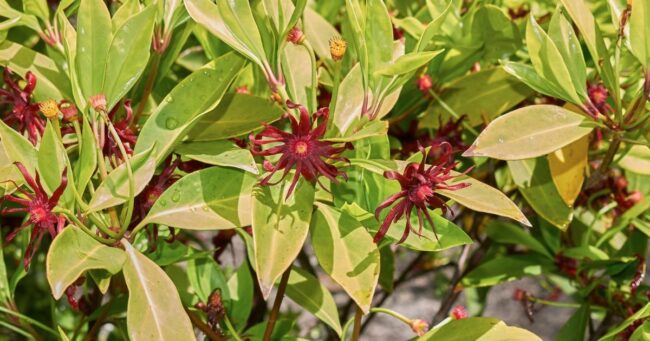
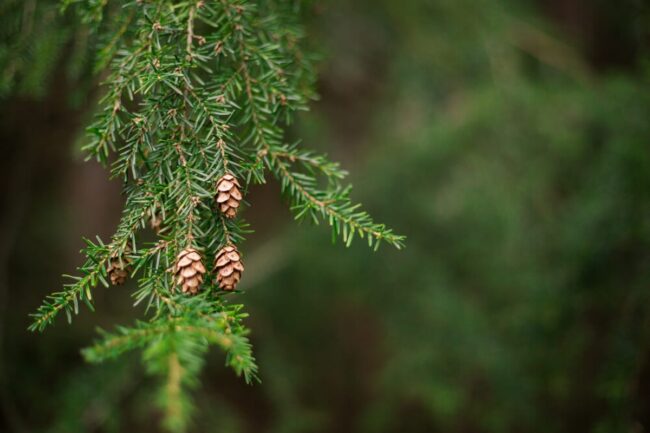
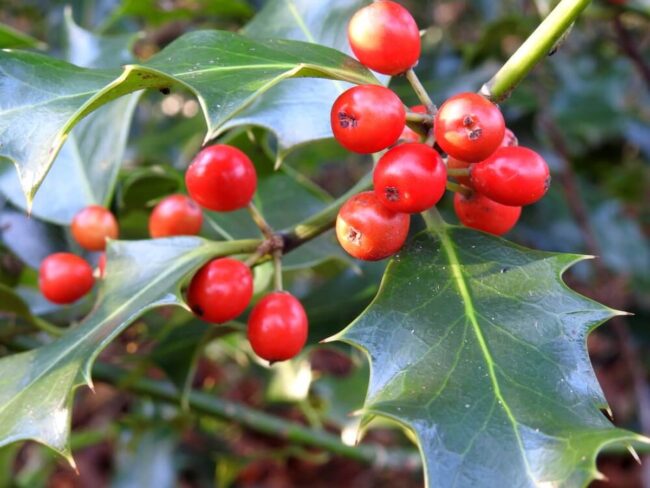
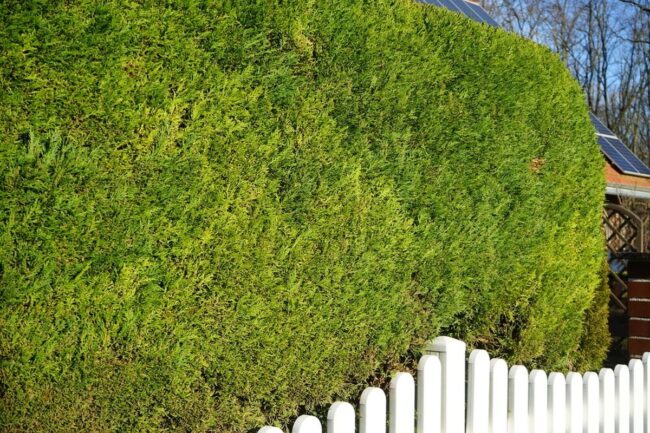
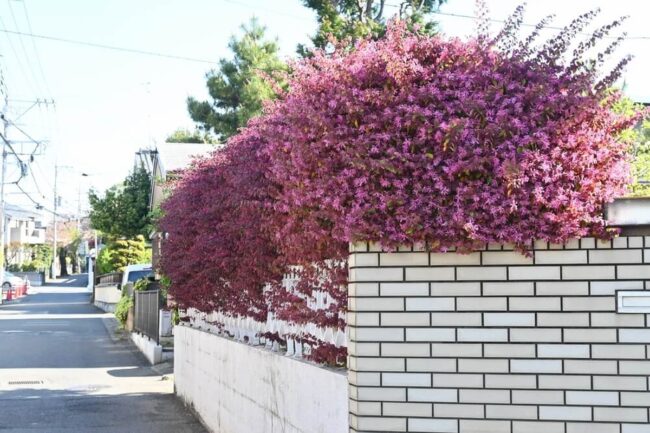
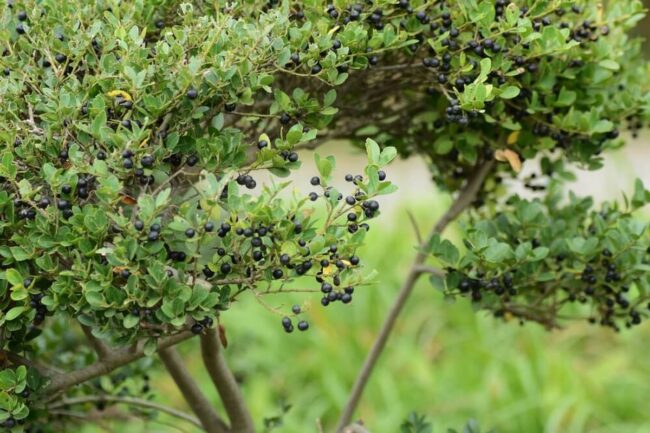
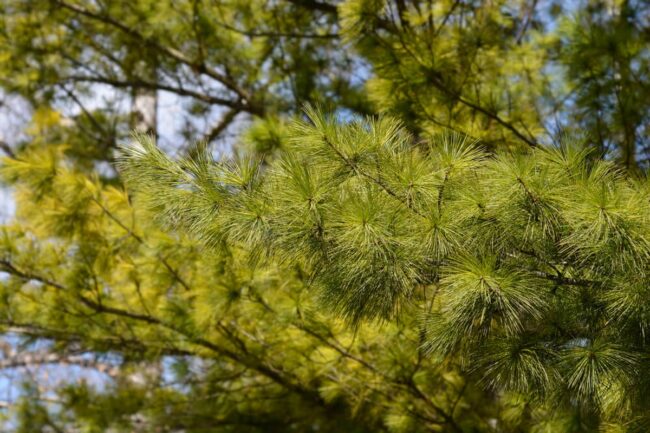
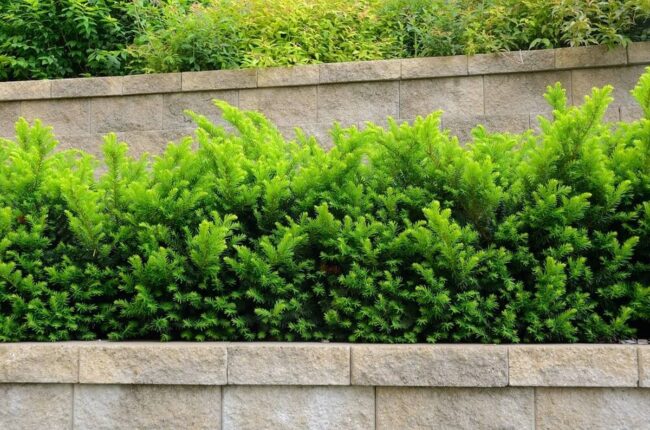
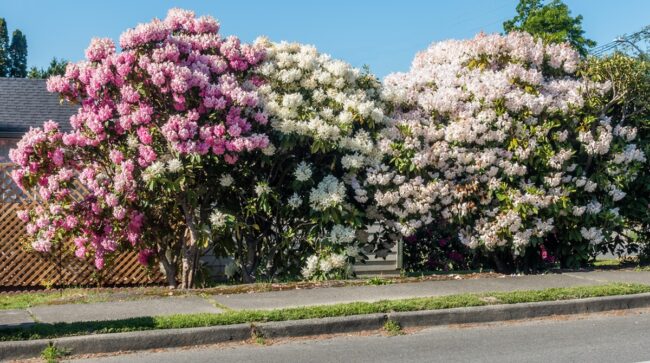
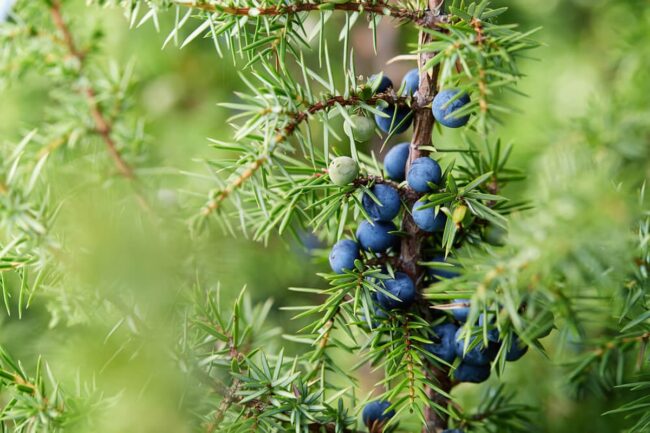
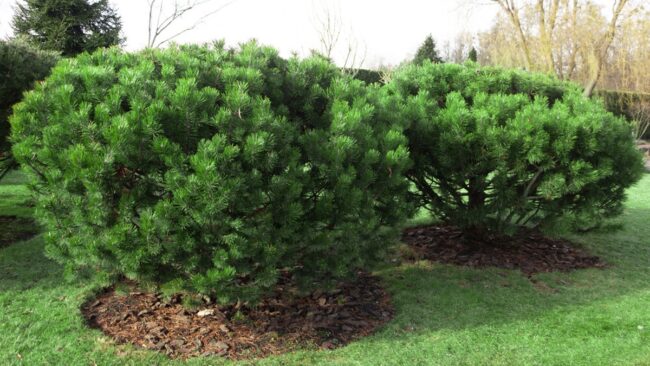
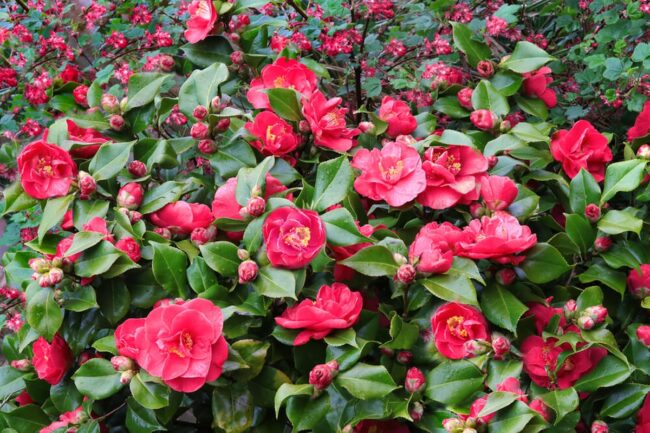
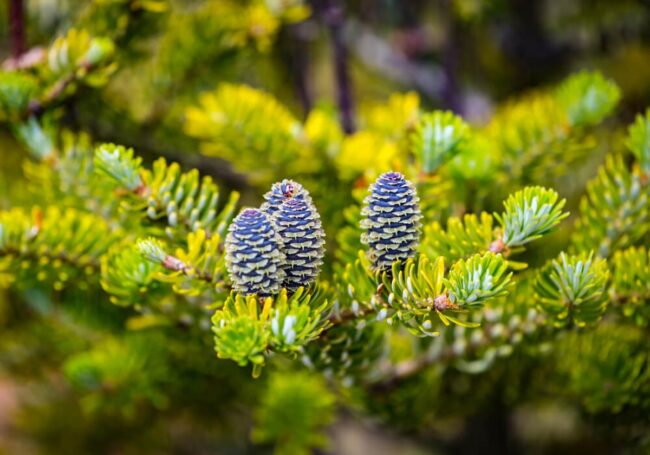
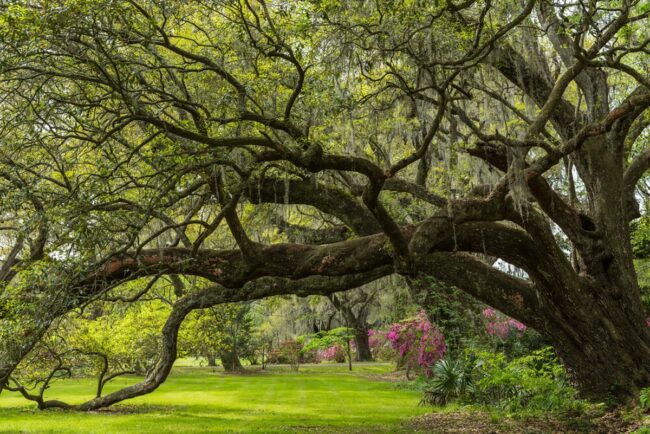
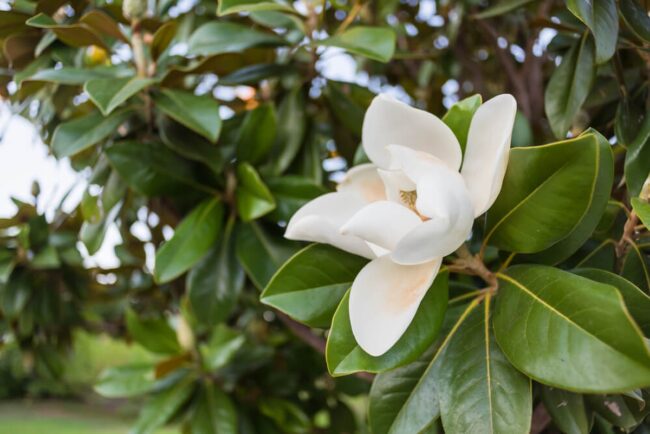
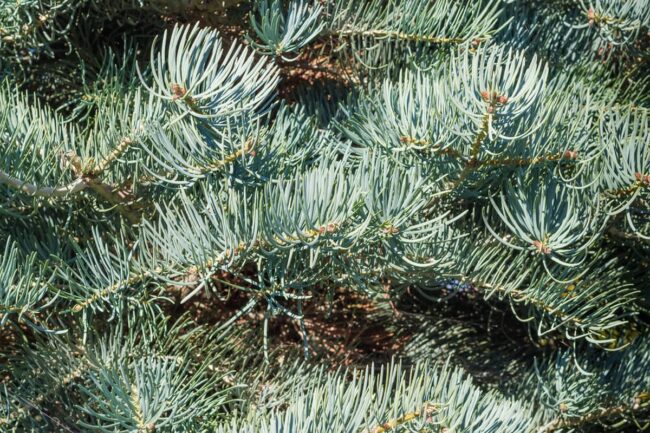
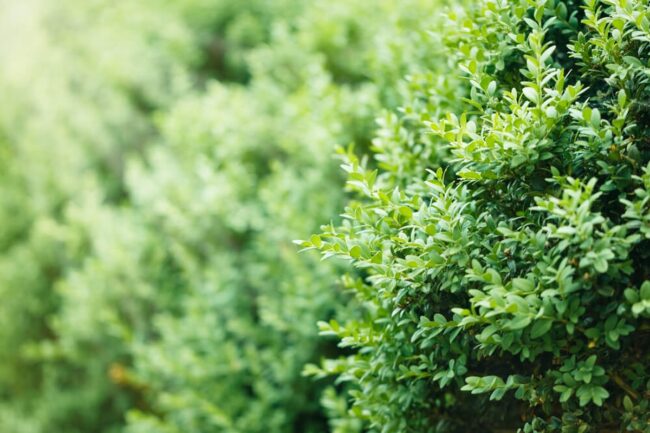

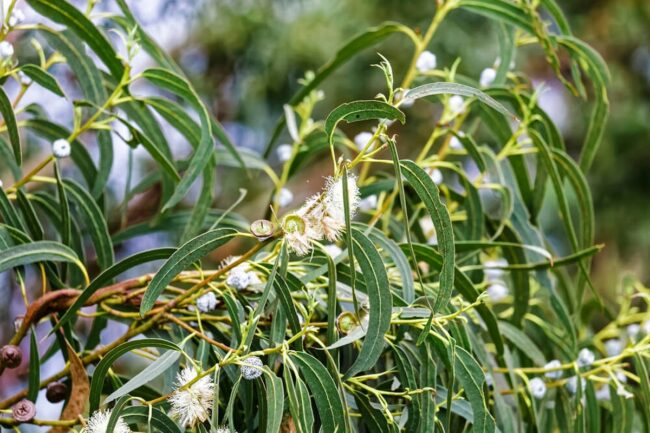
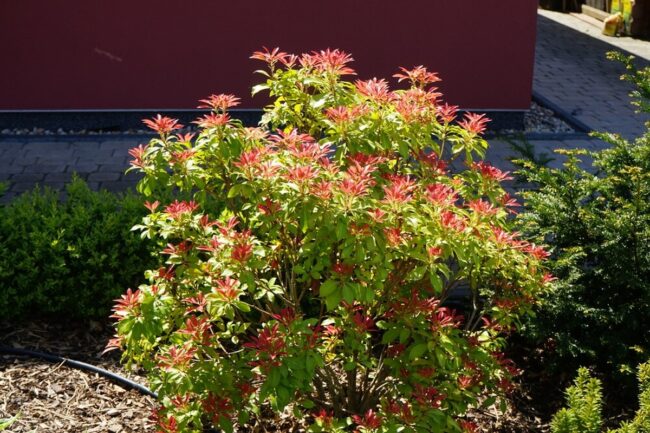
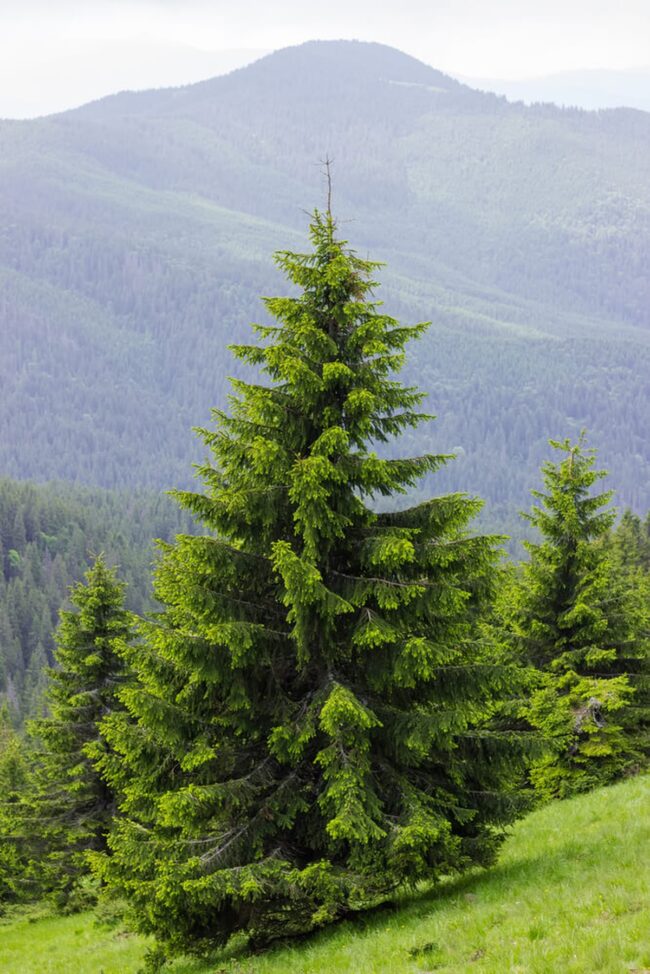
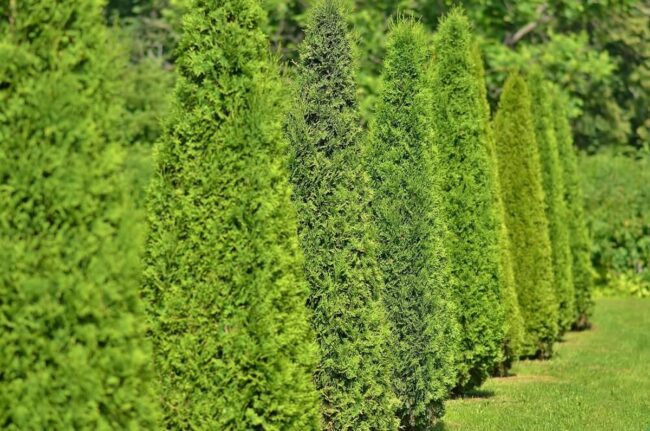
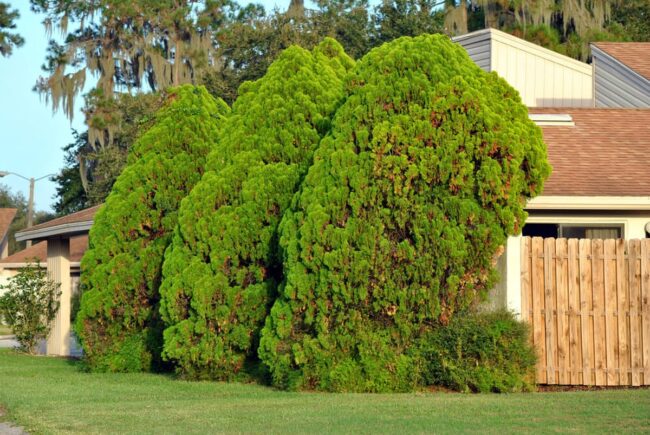
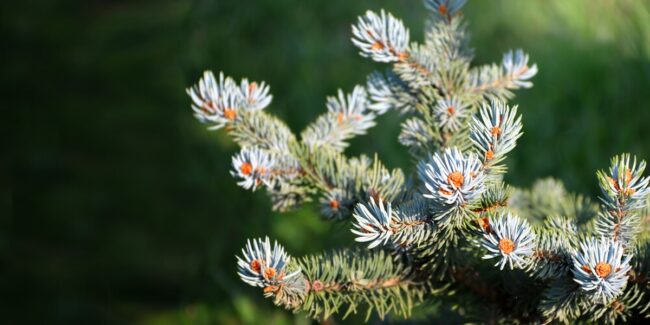
Ethan Mitchell
Founder & DIY Home Improvement Specialist
Expertise
DIY home improvement, sustainable construction, hands-on building techniques, project planning, tool expertise, eco-friendly design, step-by-step DIY guides, home renovation strategies
Education
Portland Community College, Portland, OR
Ethan Mitchell is the founder of Archeworks.org, a platform for practical DIY home solutions. With over 10 years of experience in sustainable home design and construction, Ethan simplifies projects with clear guides and eco-friendly tips. His background in construction technology ensures every project is approachable and effective.
At Archeworks.org, Ethan shares step-by-step tutorials, green living ideas, and tool safety tips, inspiring readers to improve their homes with confidence. For Ethan, DIY is about learning, creating, and feeling proud of what you build.